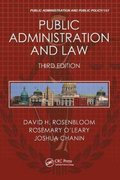Question
Problem 1 (Market for Fine Art). Consider a market for fine art. The quality of a painting is uniformly distributed on [0, 1]. A seller
Problem 1 (Market for Fine Art). Consider a market for fine art. The quality of a painting is uniformly distributed on [0, 1]. A seller values the painting at 100, while the buyer values it at 150.
(a) Suppose both the seller and the buyer don't know the exact quality of the painting. Can they agree on a price p > 0 at which they are willing to trade? If so, find the range of the price. Is trade efficient in this case?
(b) Suppose both the seller and the buyer know the exact quality of the painting. At each realization of > 0, can they agree on a price p > 0 at which they are willing to trade? If so, find the range of the price. Is trade efficient in this case?
(c) We now introduce asymmetric information. Assume the seller knows the quality of the painting, but the buyer cannot tell the true quality except its distribution. Can they agree on a price p > 0 at which they are willing to trade? Is trade efficient in this case? (Notice that in this case, the price p cannot be contingent on because the buyer does not know its realization.)
Step by Step Solution
There are 3 Steps involved in it
Step: 1

Get Instant Access to Expert-Tailored Solutions
See step-by-step solutions with expert insights and AI powered tools for academic success
Step: 2

Step: 3

Ace Your Homework with AI
Get the answers you need in no time with our AI-driven, step-by-step assistance
Get Started


